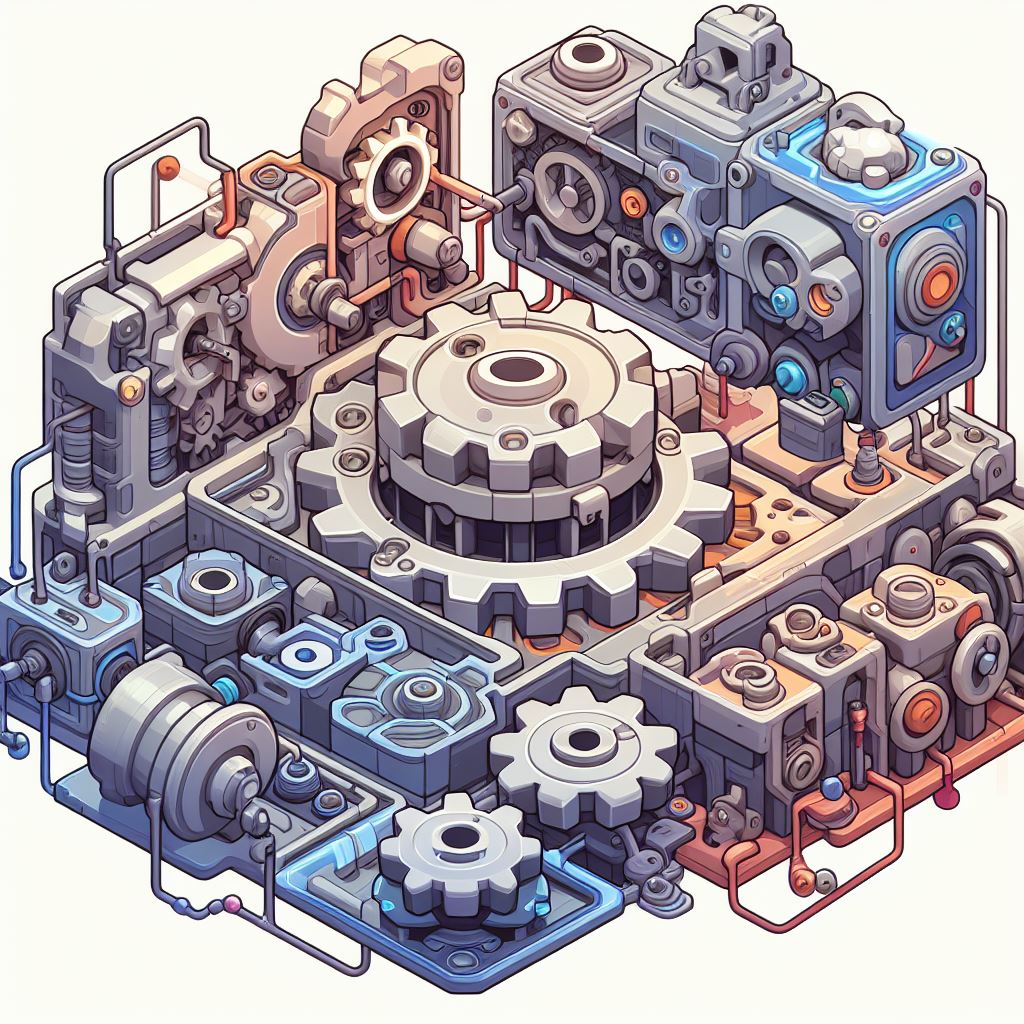
Down the Physically-Based Rendering Rabbit Hole
Physically-Based Rendering (PBR) is a powerful approach to rendering that aims to create more realistic images by accurately simulating how light interacts with surfaces. PBR has become the standard in modern game development, providing lifelike visuals that enhance the player's immersion. This article delves into the intricacies of PBR, exploring its principles, components, and implementation.
The Fundamentals of PBR
What is PBR?
PBR stands for Physically-Based Rendering, a method that uses principles from physics to achieve realistic lighting and material depiction. Unlike traditional rendering techniques that rely on artistic tweaks, PBR leverages mathematical models to simulate real-world behavior of light.
Key Principles
- Energy Conservation: This principle ensures that the amount of light reflected from a surface does not exceed the amount of incoming light. It maintains realism by preventing unnatural brightness.
- Microfacet Theory: Surfaces are made up of tiny microfacets, each reflecting light. The orientation and distribution of these microfacets determine the surface's appearance.
- Fresnel Effect: The amount of light reflected varies based on the viewing angle. At shallow angles, more light is reflected, which is critical for simulating materials like metals and water.
Core Components of PBR
Diffuse Reflection
Diffuse reflection represents how light scatters in many directions after hitting a rough surface. This scattering makes the surface appear matte. The Lambertian reflection model is often used to simulate diffuse reflection in PBR.
vec3 diffuse = albedo / PI;
Specular Reflection
Specular reflection simulates the mirror-like reflection of light from a surface. The Cook-Torrance model is commonly used in PBR for specular reflection, taking into account the surface's roughness and the Fresnel effect.
vec3 specular = F * G * D / (4 * NdotL * NdotV);
- F (Fresnel Term): Determines the reflectance based on the viewing angle.
- G (Geometry Term): Accounts for the shadowing and masking of microfacets.
- D (Distribution Term): Represents the distribution of microfacets' orientations.
Ambient Occlusion
Ambient occlusion (AO) simulates the blocking of ambient light in crevices and corners, adding depth and realism to the rendering. AO maps are used to store these occlusion values.
vec3 color = (ambientLight * ao) + (diffuse + specular);
Metallic and Roughness
The metallic and roughness values define a material's appearance. The metallic value determines whether a surface behaves like a metal or a dielectric, while the roughness value controls the surface's smoothness.
- Metallic: A value of 1.0 indicates a metallic surface, while 0.0 indicates a non-metallic (dielectric) surface.
- Roughness: A value between 0.0 (smooth, shiny surface) and 1.0 (rough, matte surface).
float metallic = texture(metallicMap, texCoords).r;
float roughness = texture(roughnessMap, texCoords).r;
Implementing PBR
Setting Up PBR Shaders
Implementing PBR involves writing shaders that account for the various components discussed. Here’s a simplified example of a PBR fragment shader in GLSL:
#version 330 core
in vec3 FragPos;
in vec3 Normal;
in vec2 TexCoords;
out vec4 FragColor;
uniform vec3 albedo;
uniform float metallic;
uniform float roughness;
uniform float ao;
uniform vec3 lightPos;
uniform vec3 lightColor;
uniform vec3 viewPos;
vec3 calculatePBR() {
// Normalized view and light directions
vec3 N = normalize(Normal);
vec3 V = normalize(viewPos - FragPos);
vec3 L = normalize(lightPos - FragPos);
vec3 H = normalize(V + L);
// Fresnel effect
vec3 F0 = vec3(0.04);
F0 = mix(F0, albedo, metallic);
float NdotV = max(dot(N, V), 0.0);
vec3 F = fresnelSchlick(max(dot(H, V), 0.0), F0);
// Cook-Torrance specular BRDF
float NDF = distributionGGX(N, H, roughness);
float G = geometrySmith(N, V, L, roughness);
vec3 numerator = NDF * G * F;
float denominator = 4.0 * max(dot(N, V), 0.0) * max(dot(N, L), 0.0) + 0.001;
vec3 specular = numerator / denominator;
// Diffuse reflection
vec3 kS = F;
vec3 kD = vec3(1.0) - kS;
kD *= 1.0 - metallic;
vec3 diffuse = kD * albedo / PI;
// Total reflected light
vec3 Lo = (diffuse + specular) * lightColor * max(dot(N, L), 0.0);
return Lo;
}
void main() {
vec3 lighting = calculatePBR();
FragColor = vec4(lighting, 1.0);
}
Textures and Materials
In a PBR workflow, multiple texture maps are used to define a material's properties:
- Albedo Map: Contains the base color of the material.
- Normal Map: Adds surface detail without increasing polygon count.
- Metallic Map: Specifies which parts of the surface are metallic.
- Roughness Map: Determines the surface's roughness.
- AO Map: Provides ambient occlusion information.
Benefits of PBR
Realism
PBR produces highly realistic images by accurately simulating the behavior of light and materials. This realism enhances player immersion and improves the overall visual quality of the game.
Consistency
PBR ensures consistent appearance across different lighting conditions, making it easier for artists to create assets that look great in any environment.
Efficiency
By leveraging physically-based algorithms, PBR can achieve realistic results more efficiently than traditional rendering techniques, reducing the need for extensive manual tweaking.
Conclusion
Diving down the physically-based rendering rabbit hole reveals a world where physics and artistry converge to create stunningly realistic visuals. By understanding and implementing the principles of PBR, developers can craft immersive and visually impressive games. Whether you're a seasoned developer or just starting out, embracing PBR can elevate your game’s graphics to the next level, providing players with an unforgettable visual experience.